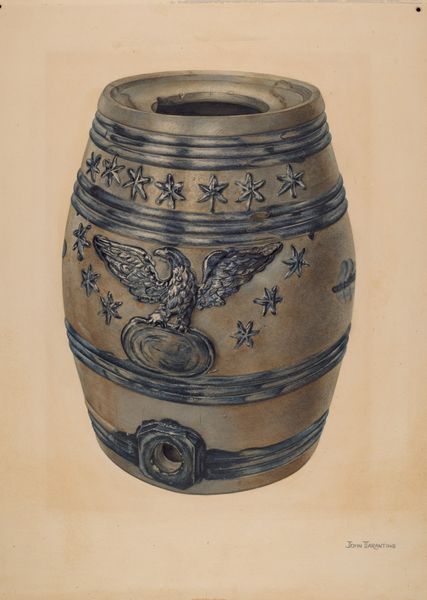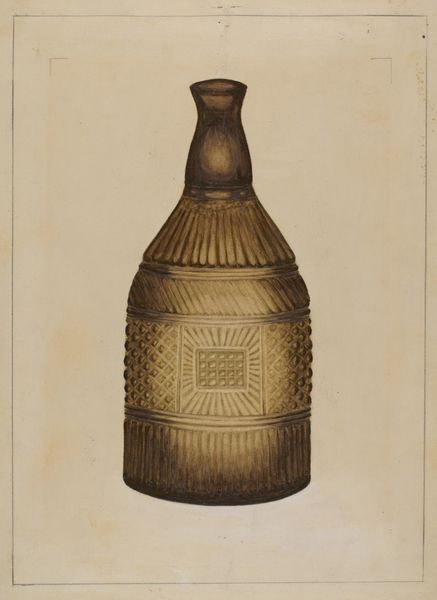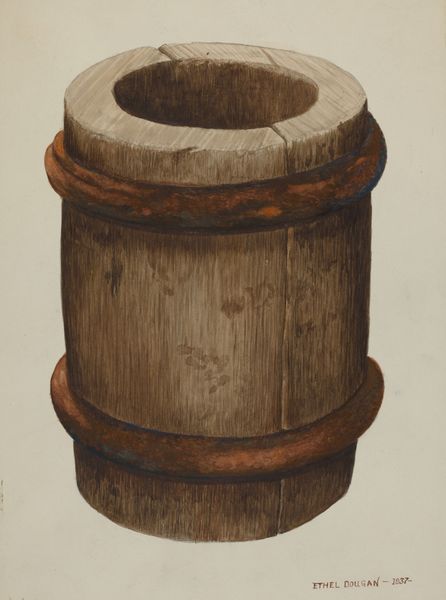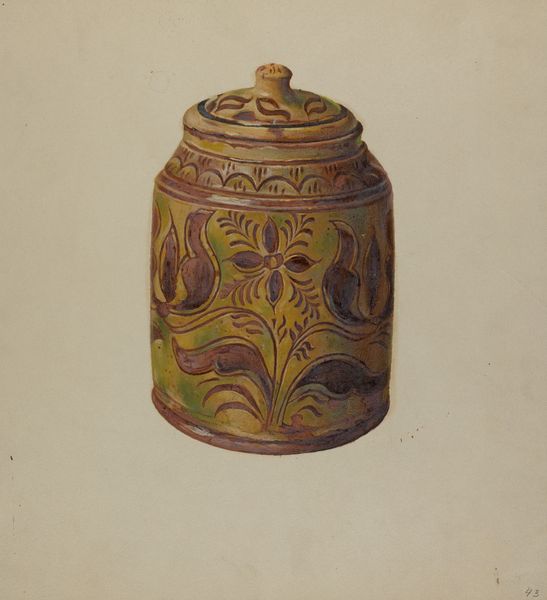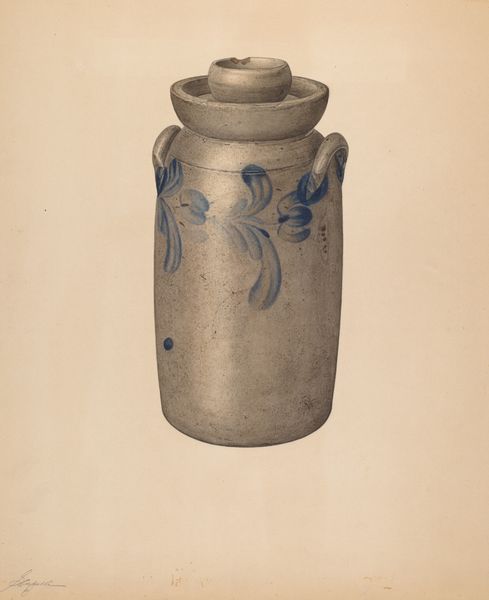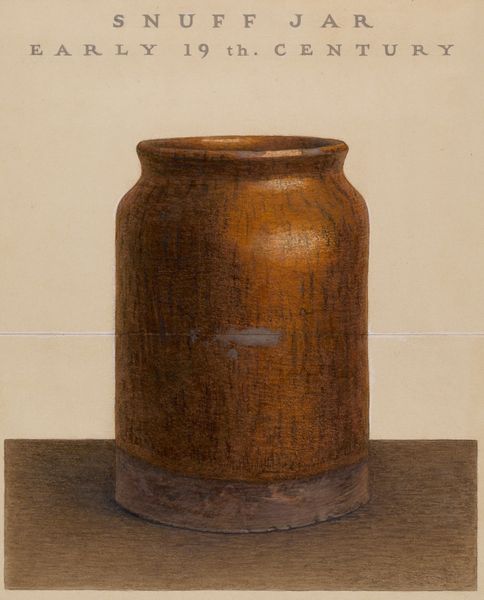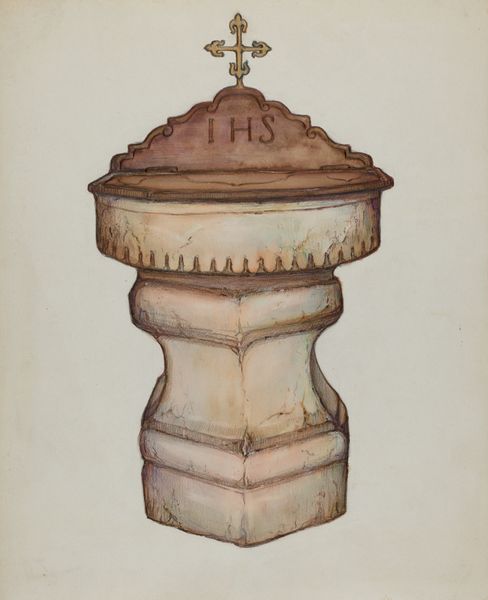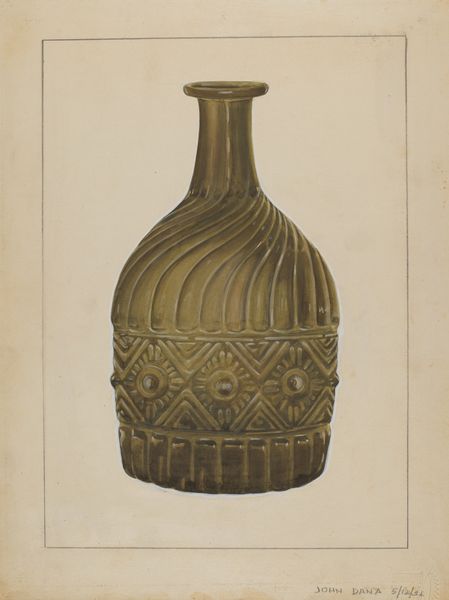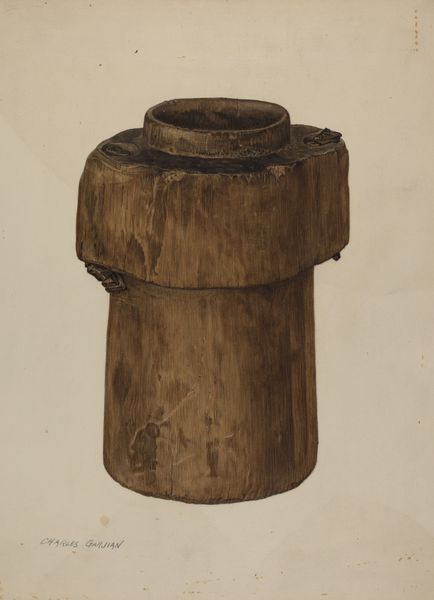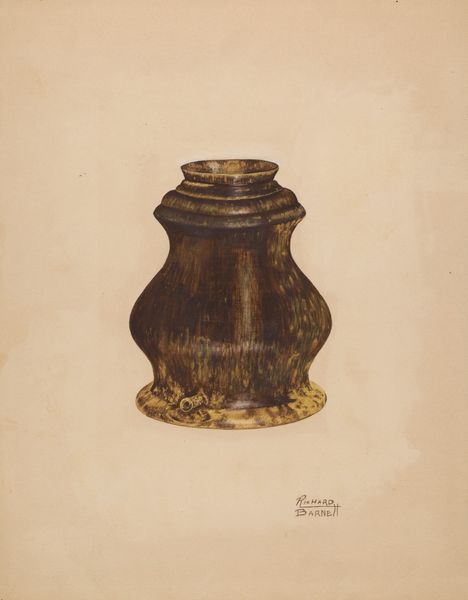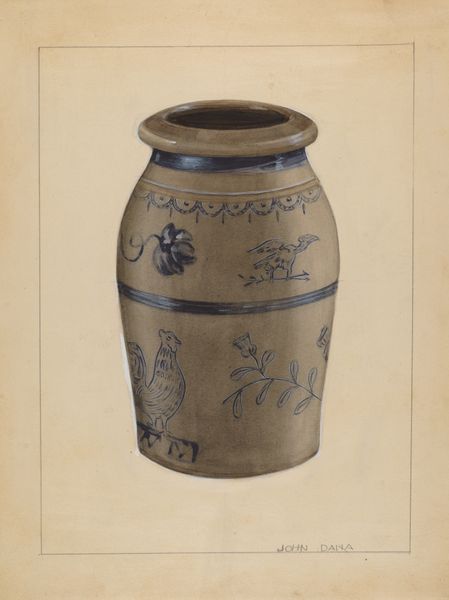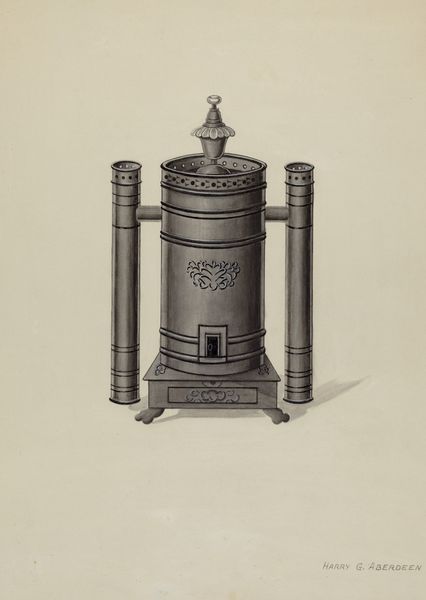
drawing, ceramic, watercolor
#
drawing
#
sculpture
#
ceramic
#
watercolor
#
folk-art
#
watercolor
Dimensions: overall: 44.9 x 45.3 cm (17 11/16 x 17 13/16 in.)
Copyright: National Gallery of Art: CC0 1.0
Curator: William L. Antrim painted this watercolor drawing of a ceramic jar, created in the style of Pa. German folk art, around 1936. What do you see when you look at this piece? Editor: Oh, immediately, I’m pulled in by the jar’s warmth. It reminds me of terracotta pottery fired on a summer day – that earthy, baked sensation. The painting's technique almost feels ancient, even pre-Columbian, though I know it isn't. Curator: That connection isn't too far-fetched. The motifs used in Pa. German folk art, though emerging in the context of early America, consciously draw from a much longer European folk tradition and its connection to agrarian life and seasonal change. There are also design connections to the Pennsylvania Dutch community. These people, primarily of German origin, began immigrating to the United States in the 17th and 18th centuries and have rich artistic traditions. Editor: Yes! It makes you consider objects from a slower era, pieces you could imagine a village potter carefully forming. And do you see the repeated tulip design near the jar's base? Such lovely repetition; they bring a touch of spring optimism to it all. Curator: The tulip is a really fascinating emblem! In Pa. German folk art, the tulip represents spiritual love and beauty. So even a humble object like this jar carries a message deeply ingrained within the cultural context of its origin. Those swirling black elements add something somber and meditative too, don’t they? Editor: Absolutely. Like whispers of stories untold. There is something undeniably beautiful in seeing tradition and symbolism given form through common, everyday items. It highlights how daily life can become a vessel – no pun intended! – for profound expressions of a people's soul. Curator: The jar seems simple, but when we dive into the visual lexicon of its creators, the ceramic becomes something akin to an archive containing deeply-felt emotions and cultural aspirations. I find myself drawn into considering the past as much as I see this simple jar. Editor: I agree completely. I see how, through objects like these, cultures keep humming. It's all connected.
Comments
No comments
Be the first to comment and join the conversation on the ultimate creative platform.
